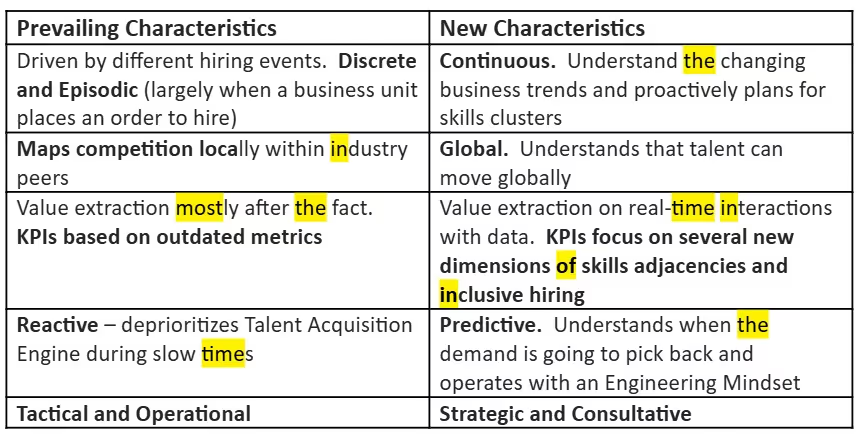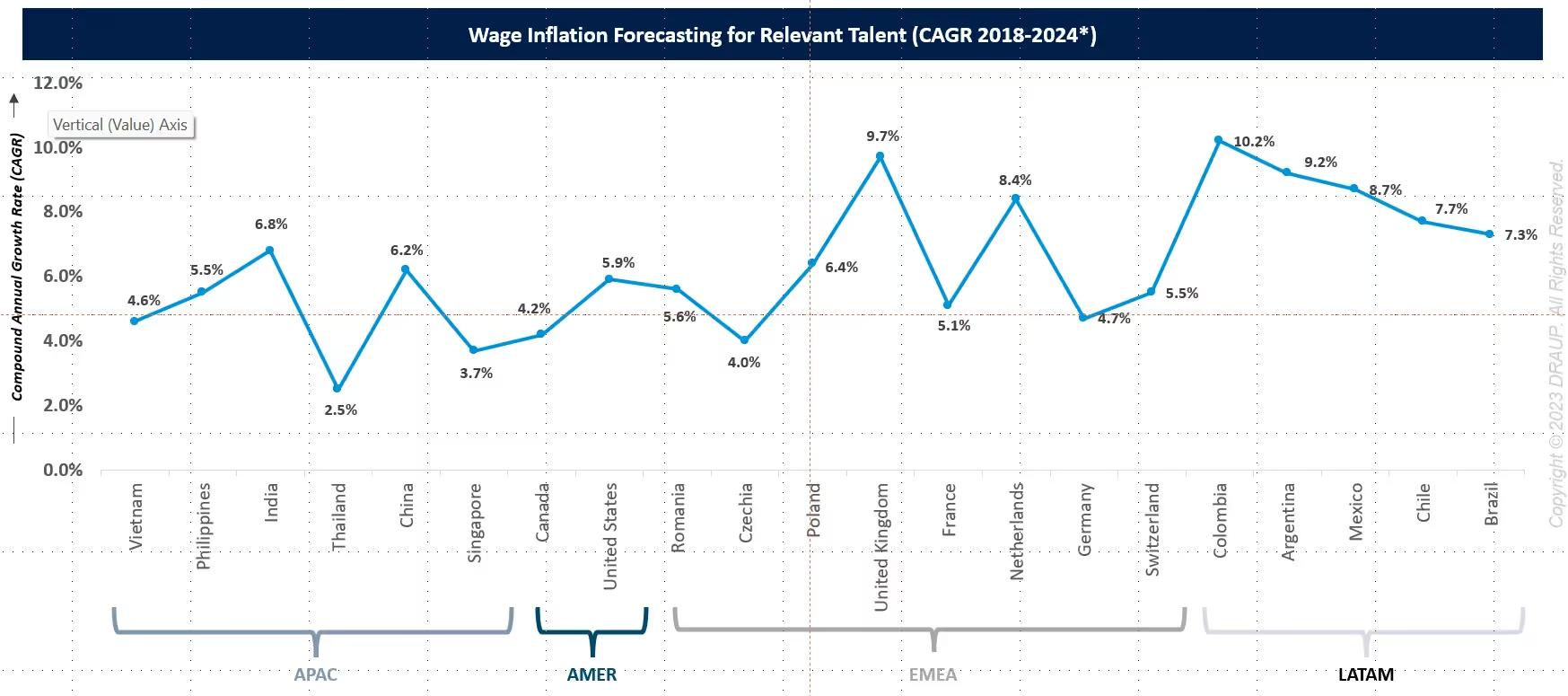The Evolving Recruitment Ecosystem and Location Trends in the Talent Market
On my recent trip to London, I was fascinated by my discussions with a taxi driver. London Taxi driving has been fairly resilient to technological changes and new Ride share business models. For a long time, the value proposition of a cab driver was the ability to navigate the ever-complex streets of London. With the advancement in Maps, this knowledge is now available for everyone to access on their mobile phones. As a result, I asked a cab driver how they adapted. One Taxi driver said that in addition to the navigation skill, they spent time understanding the historical relevance of the various locations and can now provide tours as a guide. The foundation helped the driver to learn incremental skills and grow the business.
This aspect was an eye-opener for me from a Skills Adjacencies standpoint as the world defines its labor strategy for 2023 and beyond. To build the most competitive talent strategy, we must understand the ���new potential��� of data. What does that mean?
Most of the businesses are modeling growth in Q3/Q4 time frame. We do not know the exact timing, which may be slightly delayed, but enough articles point towards this. There is a window where tech companies have slowed down on hiring. But what happens when their growth comes back? They will be even more aggressive in hunting for talent. So Enterprises whose businesses are a lot more stable than big tech cannot be quiet in this period.
- Should continue the mission of attracting the best talent
- Should focus on retention thereby EVP
- More importantly, preserve and grow the talent acquisition ecosystem
In the next three years, we will see a different type of Globalization from a people standpoint. It will not be uncommon for an American Graduate to take a job in, say, Taiwan, South East Asia, India, and parts of Europe. The paying propensity of the companies in these countries is drastically improving for the right skill.
Last week, Taiwan announced a plan to attract 20,000 top talent globally and 200,000 overseas university students as part of their wider recruitment target. As the birthrates shrink, talent from the US and Latin America may start moving to these locations. In the same week BP announced a bit of a pause on their renewables, India announced its big push into Renewables in their budget. So a top BP professional with renewable skills will certainly be in demand in India. So the talent consumption ecosystems can change significantly in the next three years. As more billionaires move into Singapore, they will find ways to get the best talent globally to move and start ventures, for example. Similarly, Australia is planning to win in the university space by emulating the US model and being the gateway to educating Asian talent
Here is a quick table on Prevailing and New characteristics of Recruitment. Each company���s characteristics may differ slightly, but we have given an overall snapshot. The inspiration for this table comes from a book written by Mohan Subramanian, a professor at IMD business school ��� Switzerland

This table is a framework, and I am sure, as a leader, you can add more dimensions to this.
We are observing a very different set of location trends in the talent market. Here are the top trends:
- Poland continues to enjoy growth in Engineering centers. Very recently, Netflix announced a new Engineering center in Warsaw
- Romania and Slovakia are getting in close evaluations and, at times, winning over other locations
- As the number of data centers grows globally, many supply chain solutions that help these data centers are rapidly expanding. Arvato supply chain solutions recently opened in Las Vegas to exclusively serve Meta platforms data centers. This area is an area of growth
- We are getting requests to understand the feasibility of smaller innovation centers. (say 15 to 20 FTEs) in global micro hubs. Places like smaller cities in the US, Nordic countries, The Balkans, Mexico, and tier 2 cities in India are the direct beneficiaries. The reason for this could be companies believe they may not need very big teams for innovation and R&D
- Compensation continues to be a heavily debated dimension. Management expectation that the compensation expectations should go down has not materialized due to various aspects of demand and wage inflation
- As a consequence of cost focus, wage inflation is another major aspect of what we are constantly modeling. We are working on new models for places like Australia, Nordic countries, the Balkans, and other emerging hubs. We will publish the same. Let me know if you will be interested in getting the same.

Overall, we are pretty excited about HR���s role under emerging circumstances. If we plan the initiatives correctly, we can accelerate transformation and adaptation and make the enterprises genuinely care for a great workplace.










.svg)




















.svg)





.svg)
